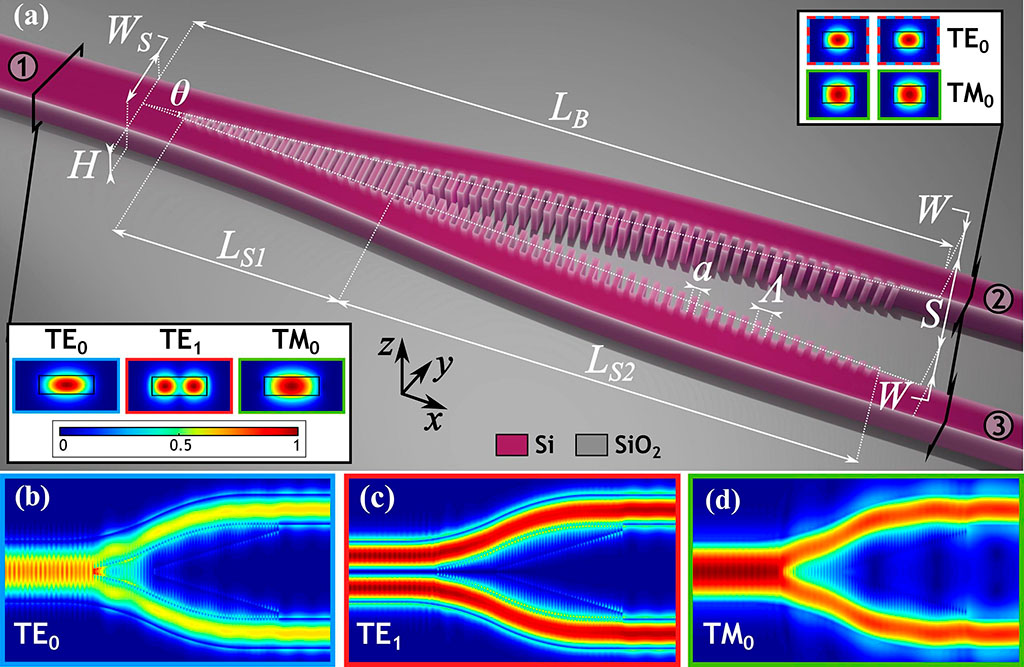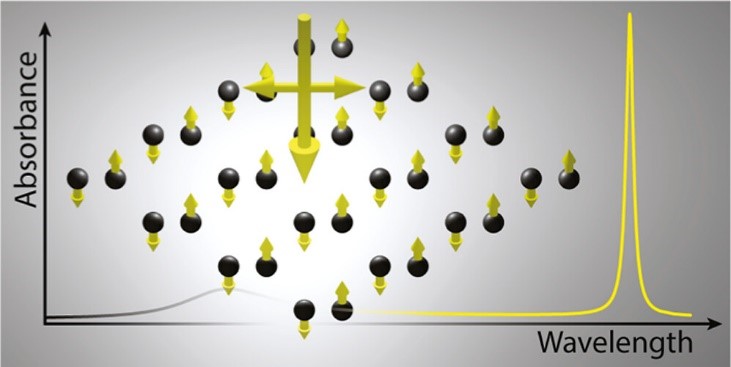Extending the spectral operation of multimode and polarization-independent power splitters through subwavelength nanotechnology
- This novel power divider, based on subwavelength metamaterials with two distinct geometries, achieves record bandwidth with low losses. Ideal for advanced photonic circuits.
- Its innovative design enables multimode and dual-polarization operations, ensuring high performance and robust tolerances to manufacturing errors.
Madrid / October 25, 2024
Researchers at the Instituto de Óptica del CSIC, the Centre de Nanosciences et de Nanotechnologies del CNRS, and the National Research Council of Canada have presented an innovative 3 dB power divider for silicon photonic circuits. The design is based on a symmetric Y junction enhanced by two distinct subwavelength metamaterial geometries. The device operates in multiple optical modes and polarizations, delivering high performance over ultra-wide bandwidth with minimal loss. These features make it an ideal choice for next-generation photonic circuits, driving the development of cutting-edge on-chip photonic applications such as programmable photonics (photonic circuits that can be reprogrammed to implement different functions), multi-objective spectroscopy or quantum key distribution.
Latest news
Natural Slab Photonic Crystals as Biogenic, Customizable Nanomaterial for Label-Free Detection
Scientists demonstrate the potential of diatoms as photonic nanomaterials for sensing. The biogenic material is extracted directly from the microalgae and does not require markers, simplifying and reducing the cost of the sensor manufacturing process. Madrid / April...
Silicon photonics has established itself as a leading technology for the development of integrated photonic circuits, taking advantage of the microelectronics industry’s existing manufacturing technologies. This compatibility enables cost-effective, large-scale manufacturing of high-density photonic circuits.
Power dividers are key components in photonic circuits, necessary to efficiently distribute and route optical signals within a chip. However, current dividers still face challenges such as limited bandwidth, optical signal losses, and sensitivity to manufacturing errors. In this work, the research team has overcome the limits of current power dividers by developing a new architecture based on a symmetric Y junction assisted by subwavelength metamaterials. This new design not only enables multimode and dual-polarization operation with minimal losses in a record bandwidth, but also improves robustness against manufacturing imperfections. These features make it a key component for photonic applications requiring high precision, low losses, and a wide operating spectrum.
In this study, the researchers designed and fabricated a 3 dB power divider for the silicon-on-insulator (SOI) platform. The device is based on a symmetric Y junction that was optimized by including subwavelength metamaterials (SWG) with two different geometries. These SWG metamaterials are made up of nanometric periodic structures that allow precise control of light propagation through them. Using three-dimensional simulations, the team tuned the geometry of the SWG metamaterials to minimize optical losses and maximize operating bandwidth, covering the wavelength range from 1300 to 2000 nm.
The devices were then fabricated and their optical properties were experimentally validated. Measurements demonstrated that the splitter maintains low losses (<0.2 dB) not only in the fundamental electrical transverse (TE0) and first-order (TE1) modes, but also in the fundamental magnetic transverse polarization (TM0) mode over a wide spectral range. Moreover, even considering fabrication variations of up to ±10 nm, the proposed device demonstrates the robustness and consistency of its high performance.

Subwavelength grating metamaterials
Subwavelength grating metamaterials are composed of periodic distributions of structures with a spacing much smaller than the wavelength of the light that propagates through them. With these subwavelength nanostructures, the light is allowed to propagate through the grating as if it were a new homogeneous material (what is known as metamaterial), with the advantage that its optical properties can be adjusted at will.
Article: Raquel Fernández de Cabo, David González Andrade, Pavel Cheben, Aitor V. Velasco “Extending the spectral operation of multimode and polarization-independent power splitters through subwavelength nanotechnology”. Optics & Laser Technology. Volume 181, Part B, February 2025, 111921
IO-CSIC Communication cultura.io@io.cfmac.csic.es
Related news
Aitor Villafranca, Spanish National Research Award 2024
He has received the award in the Angela Ruiz Robles Category, in Knowledge Transfer These awards are the most important recognition in Spain...
Normal Incidence Excitation of Out-of-Plane Lattice Resonances in Bipartite Arrays of Metallic Nanostructures
Madrid / January 15, 2024A team of researchers from the Institute of Optics of the CSIC and the Italian Institute of Technology have achieved a new...
Tunable bound states in the continuum in active metasurfaces of graphene disk dimers
Madrid / December 12, 2023A research team made up of researchers from the Institute of Structure of Matter and the Optics Institute of the CSIC, the...





